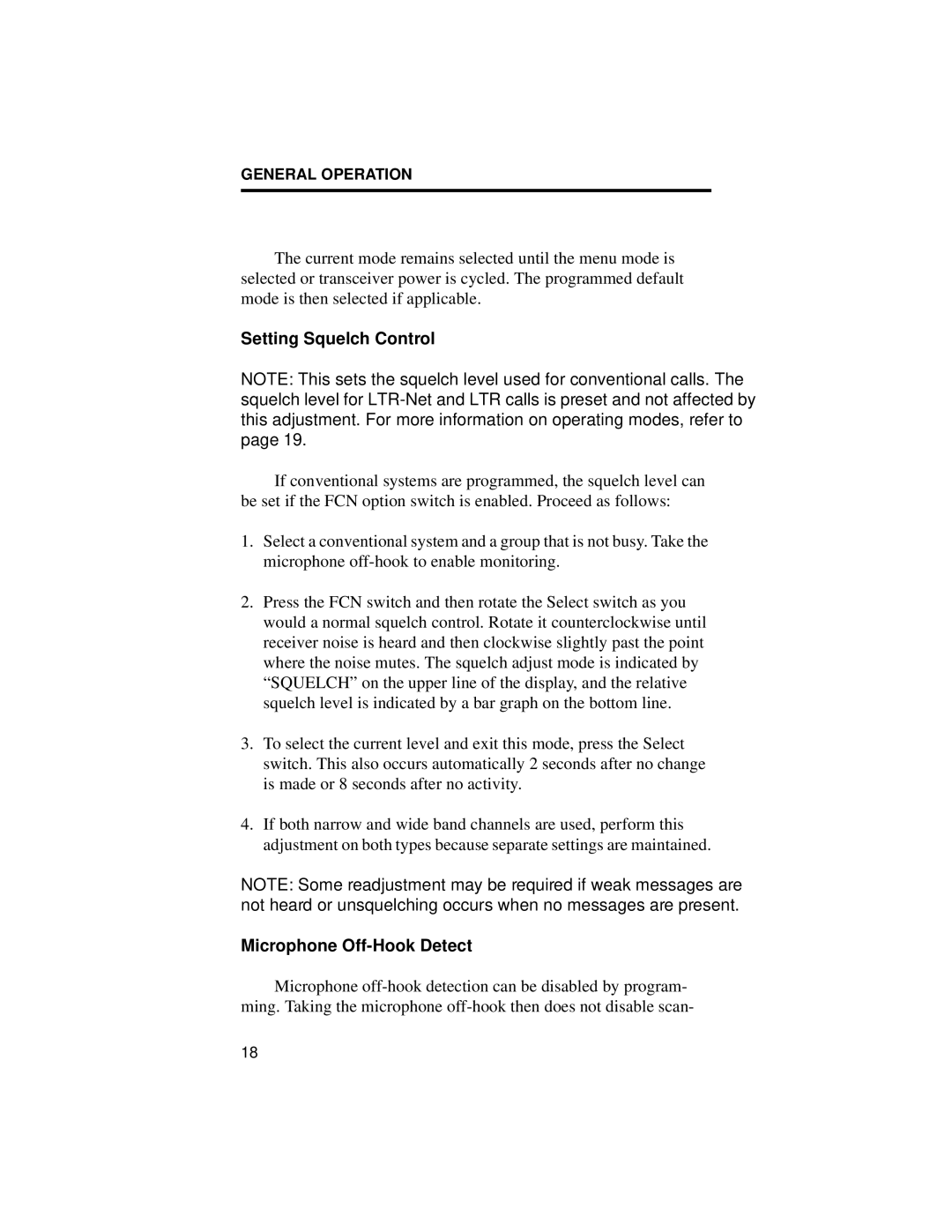GENERAL OPERATION
The current mode remains selected until the menu mode is selected or transceiver power is cycled. The programmed default mode is then selected if applicable.
Setting Squelch Control
NOTE: This sets the squelch level used for conventional calls. The squelch level for
If conventional systems are programmed, the squelch level can be set if the FCN option switch is enabled. Proceed as follows:
1.Select a conventional system and a group that is not busy. Take the microphone
2.Press the FCN switch and then rotate the Select switch as you would a normal squelch control. Rotate it counterclockwise until receiver noise is heard and then clockwise slightly past the point where the noise mutes. The squelch adjust mode is indicated by “SQUELCH” on the upper line of the display, and the relative squelch level is indicated by a bar graph on the bottom line.
3.To select the current level and exit this mode, press the Select switch. This also occurs automatically 2 seconds after no change is made or 8 seconds after no activity.
4.If both narrow and wide band channels are used, perform this adjustment on both types because separate settings are maintained.
NOTE: Some readjustment may be required if weak messages are not heard or unsquelching occurs when no messages are present.
Microphone Off-Hook Detect
Microphone
18
